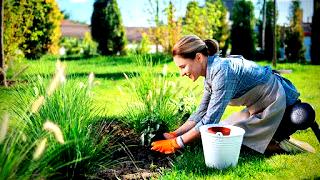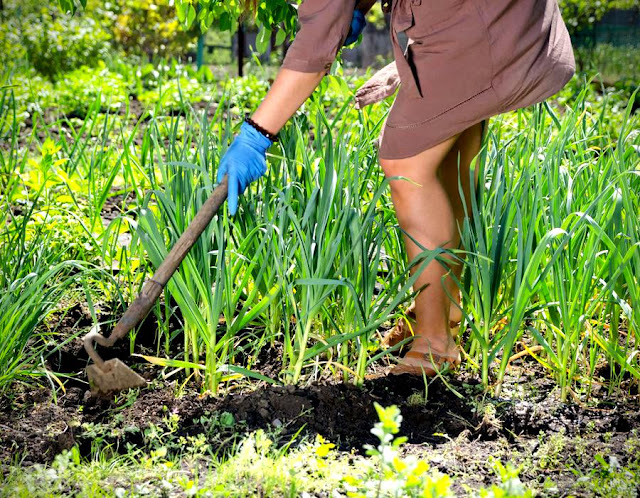What You Need To Know To Remove Weeds In Your Garden.
It can be difficult to control wild plants that appear where you don't want them. Fortunately, there are many tips and tricks to help you get rid of these leafy invaders naturally.
Weeds are hard to show compassion, but they're just plants that grow where they're not wanted (some weeds are even edible!). Consider trying this philosophy: If you like it, it's a flower; If you don't, it's a weed. However, it's perfectly reasonable to not want weeds to mix with your vegetables and perennials. To combat them effectively without resorting to toxic chemicals, you need some effective strategies, a few quality tools, and an understanding of the different types of weeds you may encounter. Then you'll need to stay on top of these throughout the growing season: Persistence pays off. And the effectiveness of weeding can even be therapeutic.
Weed Varieties
Some weeds produce enormous amounts of seeds and while they are easy to pull or hoe, new ones appear to take their place quickly. Other types of weeds have the ability to sprout new plants from small pieces of roots or stems left behind after you pull them off. And then you have shrewd weeds like the mighty dandelion that combines the best (or worst) of both types. Once you know all these weed types, you will be able to use the most effective techniques to keep them under control.
Almost all weeds make seeds (which is one way they spread), but annuals like galinsoga and lamb's quarters only have a one-year lifespan. They can be more difficult than other weeds as they will cover the soil with seeds. To get rid of them, pull a hoe often in the spring and early summer to disrupt the tiny seeds that germinate. If you can, dig up or pull out annual weeds before they have a chance to develop seeds. If you can't pull them off without damaging other garden plants, cut the stems off or below the soil to prevent them from growing back.
rooted
The key to fighting taproots is to remove all of their long, strong roots from the soil. Perennials like dandelions can regrow from any part of their roots left in the soil, while biennials like thistles will die after blooming in their second year. Dip a flat, pointed trowel or dandelion digger just next to the root to aid removal. You can also use a flat garden shovel for large, deep taproots.
rhizomatic
These weeds can be difficult to control because they have horizontal stems called rhizomes that regrow when cut. For weeds such as stinging nettle, witch hazel and quack weed, use a trowel, claw or spade fork to loosen the soil around these weeds. Rhizomes will be easier to remove and less likely to break off and leave behind pieces that can regrow.
Toughies
These weeds, including bird grass, plantain, and dock, love to grow in hard, compacted soil. It takes strength to get them out, so an oscillating stirrup hoe is your best friend for dealing with them. Its sharp, horizontal blade sways back and forth as it tills the soil, giving it even more power. This will loosen the soil around these stubborn weeds, making them easier to pull.
monsters
Aggressive weeds, including Japanese knotweed and bindweed, may seem impossible to eradicate because of their deep, strong roots. If your garden is being taken over by them (or any other weed), try depriving them of light. Move the plants you want to keep to another area, then mow the grassy part of your garden closely. Cover and weigh the weeds with sturdy tarps, then wait until all the plants underneath are dead.
Extraction Tips and Techniques
Spreading a 2-inch-thick layer of mulch over the soil in planting beds helps prevent seeds from germinating and makes it easier to remove emerging ones. The best time to control most weeds is right after watering or rainfall. It is easiest to pull them out completely when the ground is soft. To avoid feeling overwhelmed, focus on a small area each day and rotate it in your garden. Confronting weed control in small increments is certainly easier than weeding your entire garden at once.
After weeding or digging, you can leave them on the ground to shrink (best to do on a sunny day) so they're lighter to pull later. Some extra vigorous garden weeds can grow back or go to seed if left where they are, so be sure to remove them completely when you get them back in. Since most household compost piles don't get hot enough to kill seeds, it's best to dispose of the weeds in your regular trash or with other garden waste.
Best Weeding Tools
Your hands are often the best all-purpose weeders, but when you need a little more power, try one of these.
Cutting and scraping tools work best for slipping behind and under weeds to cut stems from roots. Use angled triangular blades to clean cracks and crevices.
Fishtail or taproot grasses have a V-shaped tip at the end of a long tool that you slide onto either side of a grass stem (like a dandelion) to pull the root out of the soil.
Digging knives (also known as hori-horis) are versatile tools that can dig holes, divide perennials, dig up root weeds, and dig up weed seedlings from the soil. Keep it sharp for best results.
Oscillating hoes have sharp-edged stirrup-shaped blades and long handles. Eliminate weeds by moving the blade back and forth across the soil. These work well in a vegetable garden when you want to cut young weeds between rows.



